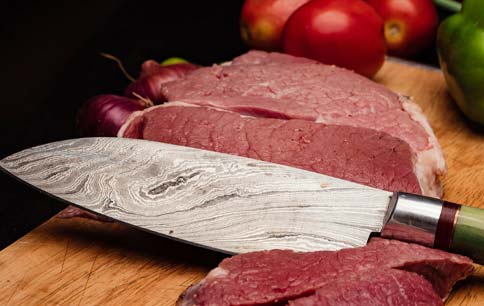Damascus Patterns
Damascus Steel Blade
How nature plays with Damascus patterns and layers.
Nature loves patterns. For example, even forged Damascus steel has its own unique set of patterns. These patterns generate by forging layers of steel. For centuries, blacksmiths have used their creativity to create unique damascus steel blade.
The patterns found in nature are classified in many different ways. However, the simplest of them all could be the one by Amy lamb in her beautiful video Patterns in Nature. Here are the three types of patterns she has identified:
1. Spirals
2. Branches
3. Layers
You will find all three types of patterns in the most diverse places. In other words, nature creates all three types of patterns, either creating their combinations or just individually.
The most common place to find a spiral is in plants. For example, flowers and buds are good examples of spirals. And so are the seashells and galaxies. Furthermore, cyclones and tornados are like a spiral. Indeed, a spiral is one of the most commonly occurring patterns in the entire universe.
Branches are probably the second most common Pattern around us. Indeed, it is evident in all kinds of plants. A Branch pattern can be just one branch moving in different directions or multiple branches taking up different paths and shapes. Moreover, various patterns are a combination of spirals and leaves.
The third Pattern you will notice all around you are layering. The sand on a beach is an excellent example of layers. Layers form when things overlap in a specific order. Spirals and branches can form layers. Undoubtedly, almost all the patterns fall with one of these three types.
Interestingly, the patterns on Damascus steel are one of these three types of Patterns.
How we make Damascus Patterns?
The layers of Damascus steel appear when different types of steel forge together. In other words, The patterns on Damascus are nothing but two different kinds of steel mixed. A good example will be oil in water. We see oil making various shapes when we drop it n water in small quantities. Another example is the mixing of food colors. Moreover, you can get the same results by mixing two oil colors.
People have been experimenting with damascus steel blade for over one thousand years. Indeed you can create unique patterns by fusing two different types of steel in varying quantities. The patterns on the Fusion knives, however, are all-natural. In other words, these patterns appear when we forge a knife from 254 layers of steel.
The following patterns of Damascus knives



are a combination of all three types: Spiral, Branches, and layers. However, the number of spirals is a lot less than the branches. Moreover, notice that each knife has its own unique shaped Spirals. Similarly, the branches on each knife have their unique shape and length. Undoubtedly, the patterns on a damascus steel blade are as unique as the fingerprints, and no two are alike!

The Pattern on this knife is all spiral. Nevertheless, if you look closely, you will notice that no two spirals are similar. Once again, that’s a similarity between the patterns on this knife and the fingerprints on your hand.
The Fusion Damascus patterns and layers are unique. Experienced artisans create with years of experience making this beautiful work of art.

